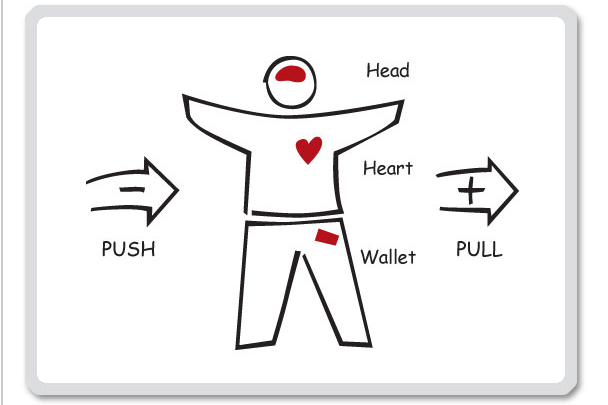In our last post, Four Things Nobody Tells Leaders: Part 1, we examined four unanticipated difficulties that leaders face, and how THE PRIMES can help manage them. In case you need a refresher, THE PRIMES are frameworks for recognizing universal patterns of group behavior that can be used to effectively communicate and solve problems. In this post, we will reveal four additional leadership challenges along with PRIMES that will provide you with a framework to manage these challenges.
1. Every Project Encounters Fragmentation.
Fragmentation is the splitting of will and focus among stakeholders. This may take the form of questioning an organization’s vision, disputing its strategy, or simply not performing requested tasks.
Although fragmentation of some scale is bound to occur at some point, the phenomenon is dangerous because it threatens unity of purpose, solidarity, and commitment to the vision. The FRAGMENTATION PRIME helps a leader visualize what kind of splintering is occurring amongst a group.
An ideal project has an aligned strategy and focus, where the team follows the leader closely as he/she guides the way. The four types of fragmentation include:
- Visionary Leader & Recalcitrant Organization: In this scenario, a leader moves forward on an initiative without the team’s support. When the leader finds themself without this support, the vision may be lost and the entire project could fail.
- Operations Focused & Fragmented: This type of fragmentation describes a scenario where team members are still focused on daily operational tasks and refuse to change to accommodate the new initiative.
- Strategy Focused & Recalcitrant Middle Management: This type of fragmentation shows a leader who has inspired the team, but who hasn’t communicated the benefits effectively to middle managers. Leaders and line-level employees move forward, leaving middle managers behind. Underestimating the power of securing mid-management buy-in is a costly mistake.
- Strategy Focused & Fragmented: A group that is strategy focused and fragmented is the most common type of fragmentation. Despite the leader making efforts to motivate the entire team, some individuals from middle and bottom levels refuse to change with the new initiative.
Because fragmentation is inevitable, leaders must address it proactively to avoid chaos and reestablish cohesion. Leaders can do this by investing in cohesion, which brings us to our next leadership challenge.
2.Group Cohesion Requires Constant Effort.
In order for groups to function at their best, leaders must work to develop cohesion. A group is in cohesion when everyone gives the same answers to the following questions:
- “Where are we starting from?”
- “Where are we going?”
- “What do we have to do to get there?”
- “What’s at stake if we fail?”
The most common sign of groups that are not acting in cohesion are individuals with different views of their current situation, the urgency of the required change, and how specifically the group will respond.
When these differences prevail, they fragment the group’s focus and dissipate the energy. The COHESION PRIME reminds us that people work on different activities at different intensities, and that cohesion requires constant energy.
As a leader, you should identify areas where coordination and reinvestment in the above questions will help maintain cohesion, and take action to encourage these conversations. For example, if the group does not have a unified understanding of where a project is heading, set aside time to clarify your goals while answering questions from the group. Without proactive investment in cohesion, fragmentation will occur and bleed the energy out of any change or transformation initiative.
3.Success is a State of Being.
Great leaders do not define success in terms of the external results of their efforts; they know that it is their commitment to the effort that will produce success. The COMMITMENT VS. ATTACHMENT PRIME states that if you are committed to the outcome and relinquish your attachment to the outcome, you will achieve success. Just think of what valuable insights, new processes, or new products that can and have been the result of perceived failures – Post-it Notes and microwave ovens are two notable examples of failures turned successes. If these creators focused on the failure of their desired outcome, they would not be credited with some of today’s most visible products.
By focusing on commitment, you are able to define the success of an initiative in terms of the experience you created for yourself and your team. Issues arise when you become attached to a program’s outcome and lose sight of your commitment to that experience. Attachment to outcomes makes you vulnerable to others’ definitions of success and can bog you down in their judgments.
Given the volume of uncontrollable factors that can affect an initiative, you won’t always achieve the results you are seeking. If you attach too much weight to the outcome, you may view your effort as a failure when in fact it contains the seeds of success.
4.Being Confused is a Good Thing.
Everyone gets confused, including leaders, but confusion is actually a good thing. The CONFUSION PRIME reminds us that when we are confused, we have the greatest opportunity to learn. Moments of confusion allow individuals to recognize that the status quo needs to be changed while dropping their barriers to the new or different. In these periods of confusion, the group is able to produce transformative solutions to problems.
Ultimately, great leaders value learning, so great leaders should learn to value confusion.
In fact, this state should be appreciated and enjoyed.
We hope that you’ve found our series on tips nobody tells leaders valuable. If you’d like to learn more about using THE PRIMES to solve group and leadership challenges, subscribe to our newsletter today.






 The Clearing’s Employee Experience
Improvement model, adapted from Itam
& Ghosh, 2020, focuses on three objectives:
The Clearing’s Employee Experience
Improvement model, adapted from Itam
& Ghosh, 2020, focuses on three objectives: 














